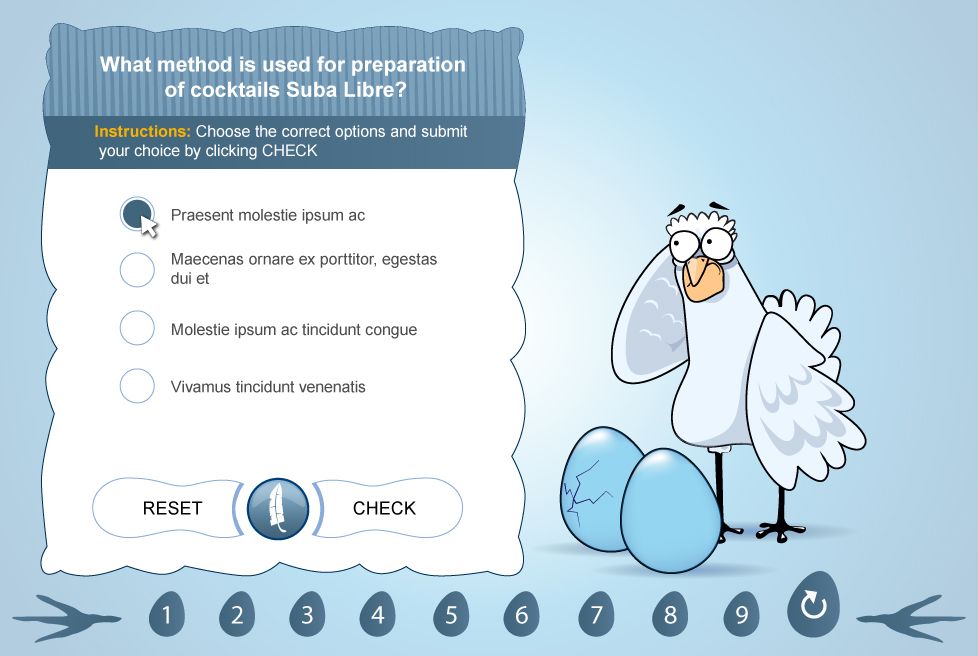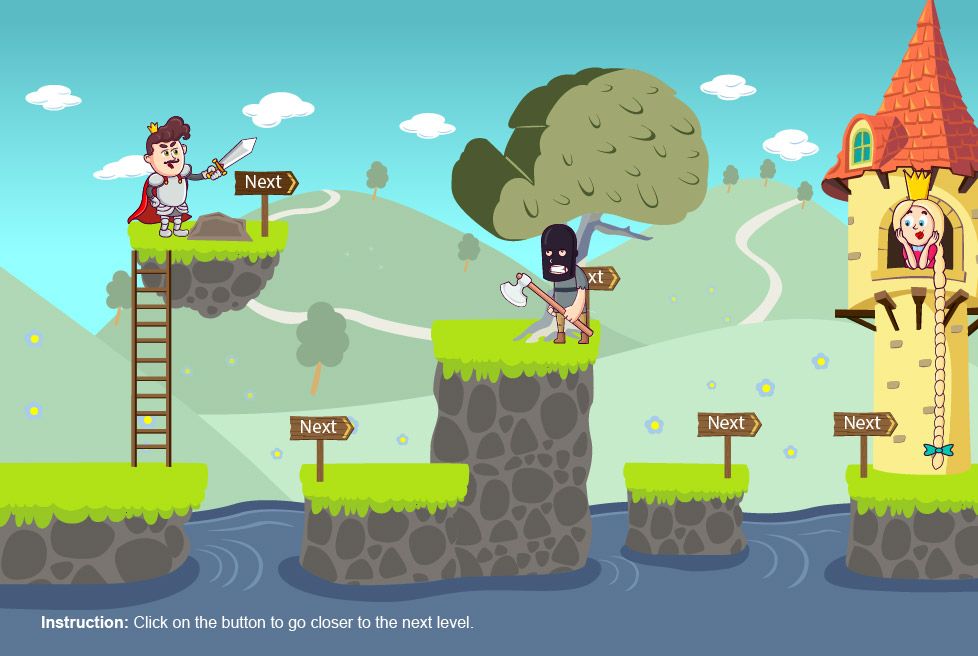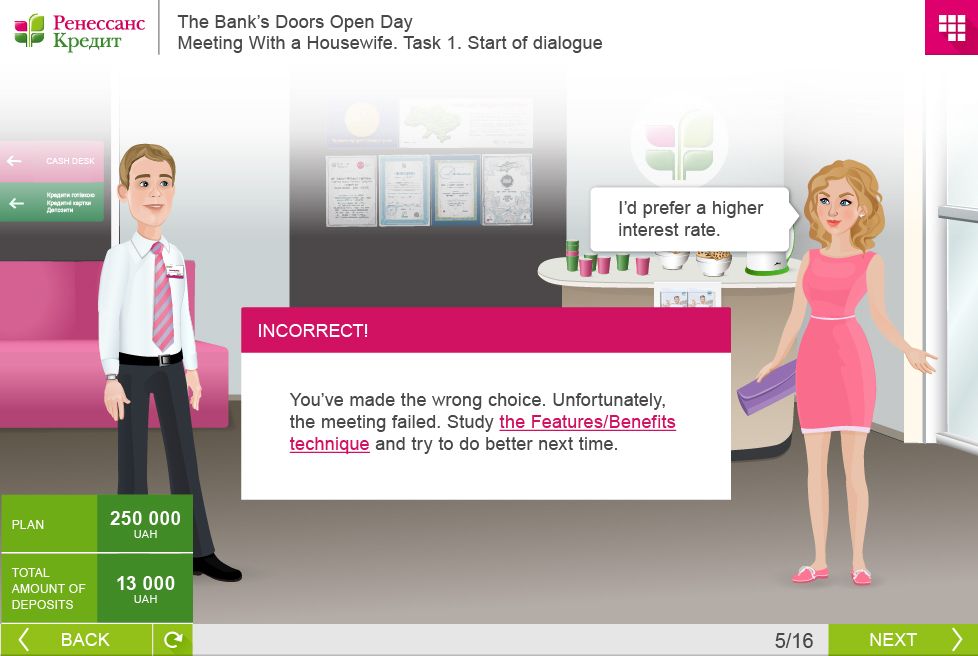Interactive Learning
Interactivity in e-Learning
None of the training courses can do without tests and quizzes. Interactive Learning allows us not only to test users’ knowledge, but also to create a brainstorming environment in order to make students think outside the box.
The interactive tasks are designed in such a way that user can do the following:
- choose the correct answer among the incorrect ones (single / multiple choice questions)
- compare or sort out different options (determine the correct order of their arrangement).


Moreover, the ability to program a specific reaction to each user’s action allows you to develop the thematic games and simulators. The excitement and high-level motivation caused by Interactive Learning significantly increase training effectiveness.

The level of theoretical knowledge that users achieve after the course completion, does not always give the required practical results. The reason for this is quite simple – there is no experience in applying new information. Such opportunities as the situation analysis and decision-making, as well as the verification of this decision and its further modification, are realized during the case studies. Being in a real-life situation, communicating with virtual characters and choosing the optimal solution of the problem, the case study user gets the experience. Even though this experience is not actually real, but it is painless for them. Moreover, task direction can be easily adjusted according to the training needs.

The simulator is another tool that allows you to apply new knowledge in practice. This electronic examiner works according to a certain algorithm. It leads user to the implementation of a specific learning task, commenting on the mistakes made at all the stages of the decision-making. The simulator is based on the various tests, but this tool differs from testing due to its practical implementation. The users answer the questions (many times, if necessary) not just to test their knowledge. They face with the real-life problem, which can be solved only when choosing the right steps and actions.

